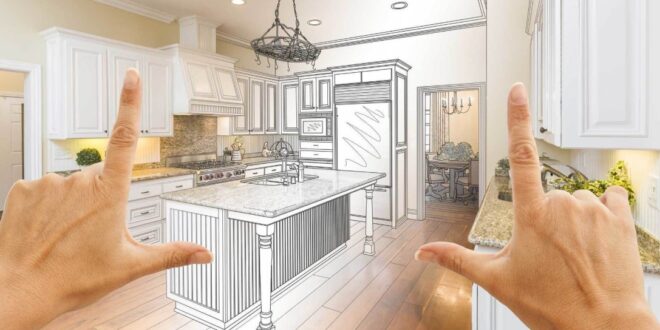Taking on home improvement projects yourself can be one of the most rewarding and cost-effective ways to refresh your living space. Whether you’re updating a tired-looking room, fixing a long-standing issue, or adding value before a sale, DIY projects can be both practical and creative.
But where do you begin? With the right guidance, tools, and mindset, even novice DIYers can achieve impressive results.
Key Points
- DIY projects let you customise your home while saving on labour costs
- Beginners can start with simple tasks like painting or installing shelves
- Having a realistic plan and basic tools is essential for success
- Many improvements can increase home value and appeal
- Online resources and local communities offer plenty of guidance and support
- Know when to consult a professional – especially for electrical or structural work
Why Choose DIY?
The appeal of DIY home improvements goes beyond saving money. For many, it’s about the satisfaction of creating something with your own hands, learning new skills, and personalising your home. You’re in full control – able to choose the materials, style, and timeline to suit your lifestyle.
From painting a room to installing shelves or building custom storage, the variety of DIY tasks means there’s something for every skill level. And with so many online resources, learning how to complete a project is easier than ever.

Getting Started ─ Tools and Planning
Before diving into a project, preparation is key. Start with a plan: what do you want to improve, and what will it take to complete the job? Measure your space carefully, choose suitable materials, and create a realistic timeline.
You’ll also need the right tools. While some projects require only basic items like a hammer, tape measure, or paintbrush, others may call for power tools such as drills, jigsaws, or sanders. Investing in good-quality tools can make your work easier and produce better results.
Always prioritise safety – use protective gear when necessary, read instructions thoroughly, and never tackle electrical or plumbing work without proper knowledge or guidance.
Common Mistakes Beginners Should Avoid
Even simple DIY jobs can go sideways without proper planning. Beginners often make the same avoidable errors that lead to frustration, wasted time, or extra expense. Being aware of these from the start can make your experience much smoother.
Here are key missteps to steer clear of:
- Skipping the prep ─ Rushing into painting or building without surface prep leads to poor results
- Using low-quality tools ─ Cheap tools break easily or cause uneven work
- Measuring once instead of twice ─ Incorrect measurements cause alignment issues and wasted materials
- Ignoring safety gear ─ Injuries happen quickly – always wear protection when needed
- Underestimating time ─ DIY takes longer than expected, especially the first time
- Not reading instructions ─ Whether it’s furniture assembly or paint curing times – details matter
Avoiding these pitfalls helps ensure your projects look polished and last longer.

Easy DIY Projects for Beginners
If you’re just getting started, here are some manageable projects that offer big rewards with minimal risk:
- Painting walls or furniture ─ A fresh coat of paint can dramatically change the look and feel of a room or item. Opt for neutral colours for resale value or bold tones for personality.
- Replacing fixtures ─ Swapping out cabinet handles, light switches, or taps can update a room’s aesthetic without major work.
- Installing shelving ─ Floating shelves or simple brackets can add both storage and style to walls.
- Building planter boxes ─ Great for gardens or balconies, these wooden boxes are simple to construct and personalise.
- Laying peel-and-stick flooring ─ Ideal for kitchens and bathrooms, this budget-friendly flooring is easy to apply and instantly refreshing.
Saving Money and Adding Value
One of the most compelling reasons to try DIY home improvements is the potential for long-term savings. Professional labour can account for a large portion of renovation costs. By taking on projects yourself, you can reduce expenses while still upgrading your space.
Moreover, many DIY upgrades increase the value of your home. Well-executed painting, landscaping, kitchen updates, and energy-efficient improvements (like sealing drafts or upgrading insulation) all appeal to future buyers.
When to Call in the Pros
While many tasks can be handled on your own, some jobs are better left to professionals. These include electrical rewiring, structural changes, roof repairs, and complex plumbing work. Knowing your limits is a strength, not a failure – it ensures your safety and protects your home’s integrity.
If you’re ever unsure, it’s worth consulting a professional or asking your local DIY store for advice. Combining DIY with professional input can result in better outcomes and fewer costly mistakes.

DIY vs. Professional ─ When to Do It Yourself
Knowing when to roll up your sleeves and when to call in a pro can save both money and headaches. Here’s a simple comparison to help guide your decision:
| Task Type | Best Done DIY | Better Left to Professionals |
| Painting walls/furniture | ✅ Easy, low-risk | ❌ Only pro for complex finishes |
| Replacing fixtures | ✅ Straightforward | ❌ If it involves wiring/plumbing |
| Basic carpentry (e.g. shelves) | ✅ Ideal starter project | ❌ For custom-built or load-bearing items |
| Flooring (peel-and-stick) | ✅ Beginner-friendly | ❌ Tiling or hardwood requires precision |
| Electrical or gas work | ❌ Risky, requires certification | ✅ Must meet safety codes |
| Major renovations/structural | ❌ High risk | ✅ Requires planning & permits |
Learning Resources and Community Support
Thanks to the internet, tutorials, blogs, and videos are readily available to guide you through almost any home improvement task. DIY communities, forums, and social media groups offer peer advice and inspiration, and can even help troubleshoot problems as they arise.
Hardware and building supply stores often host free workshops or have knowledgeable staff happy to help beginners. Local libraries and bookshops are also full of step-by-step guides and project ideas.
The Joy of Doing It Yourself
Beyond the functional benefits, DIY home improvements offer a sense of accomplishment and creative expression. Whether it’s putting up a new garden fence, revamping an old piece of furniture, or creating a cosy nook, the results are something to be proud of.
If you’re ready to roll up your sleeves and start your next project, explore tools, materials, and inspiration through resources dedicated to DIY home improvements. For a range of ideas and essentials tailored to home and garden projects, visit this hub for DIY home improvements.
No matter your experience level, every successful project builds confidence. Start small, plan carefully, and enjoy the process – you might just discover a new passion in the process.
 Imagup General Magazine 2025
Imagup General Magazine 2025
